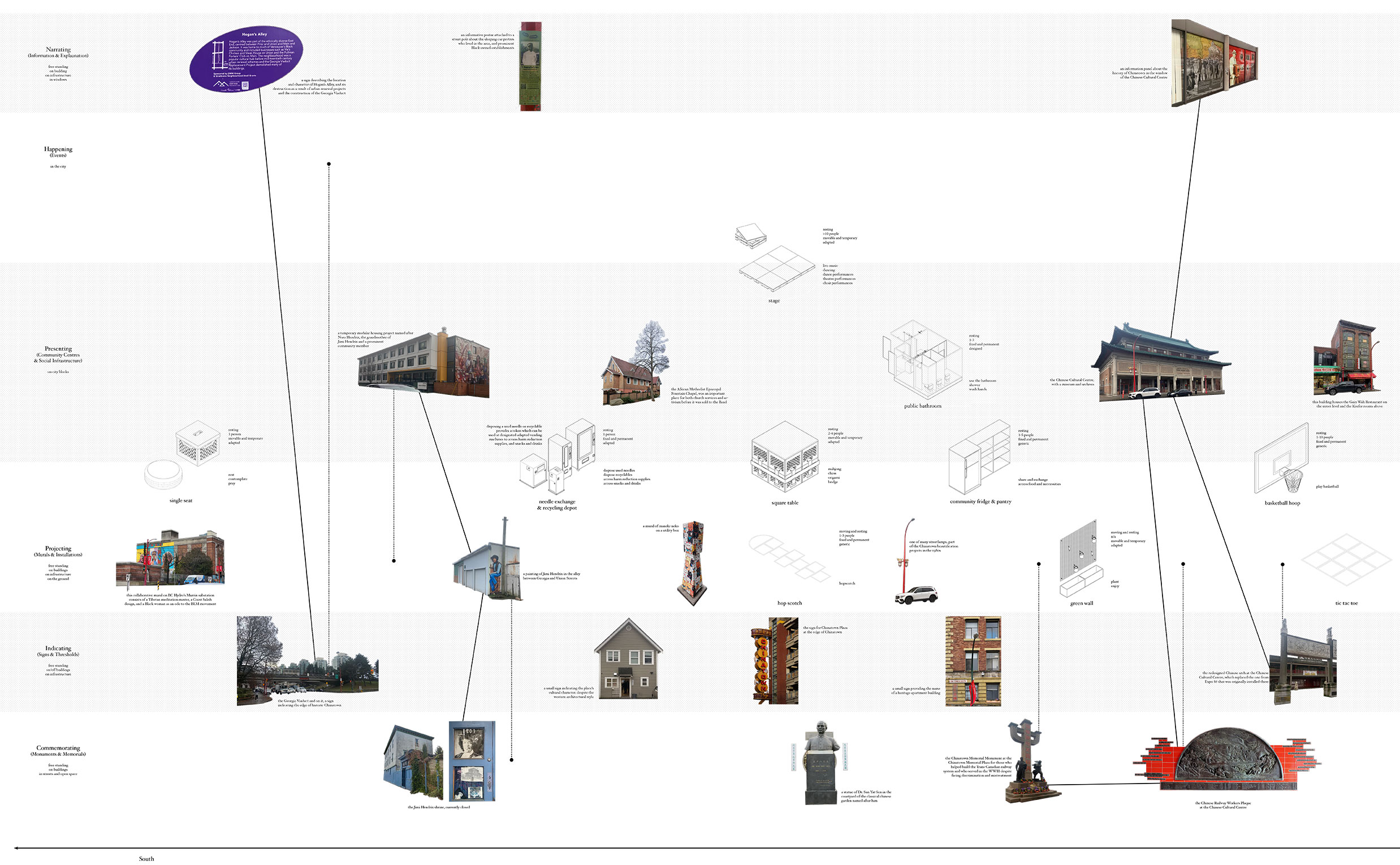My thesis aims to encourage belonging and solidarity in Vancouver’s Downtown Eastside. The area is composed of many urban enclaves that have shifted and overlapped, disappeared, and reappeared in time and space, including culturally specific ones like Chinatown, Paueru-Gai, and Hogan’s Alley. This part of the city faces urgent concerns regarding poverty, homelessness, violence, addiction, and mental health in and around the East Hastings area, but also provides many much-needed social services. Public space, necessary for the wellbeing of all residents, is especially important to those most vulnerable; yet it is sorely lacking. My thesis proposes to expand and connect existing, and potential, informal public spaces by transforming Vancouver’s underutilised and ill-maintained alleyways with small-scale interventions, surface treatment and lighting. These interventions consist of public space and social services infrastructures and occupy varying positions in the ranges of permanent/temporary, fixed/movable, formal/informal, high/low tech, and single/multi-functional. They often appropriate and adapt everyday, mass-produced items, enabling the community to build, operate and maintain them. My interventions fit in and between six categories of urban elements I identified within the area – ‘indicating’ (signs and thresholds), ‘presenting’ (community centres and social infrastructure), ‘happenings’ (events), ‘projecting’ (murals and installations), ‘commemoration’ (monuments and memorials), and ‘narrating’ (information and explanation). Overall, the multiplicity and character of these interventions, as well as their strategic placement in alleyways, reflect the complexity of Vancouver’s Eastside and its need for a variety of approaches to the problems it faces.



